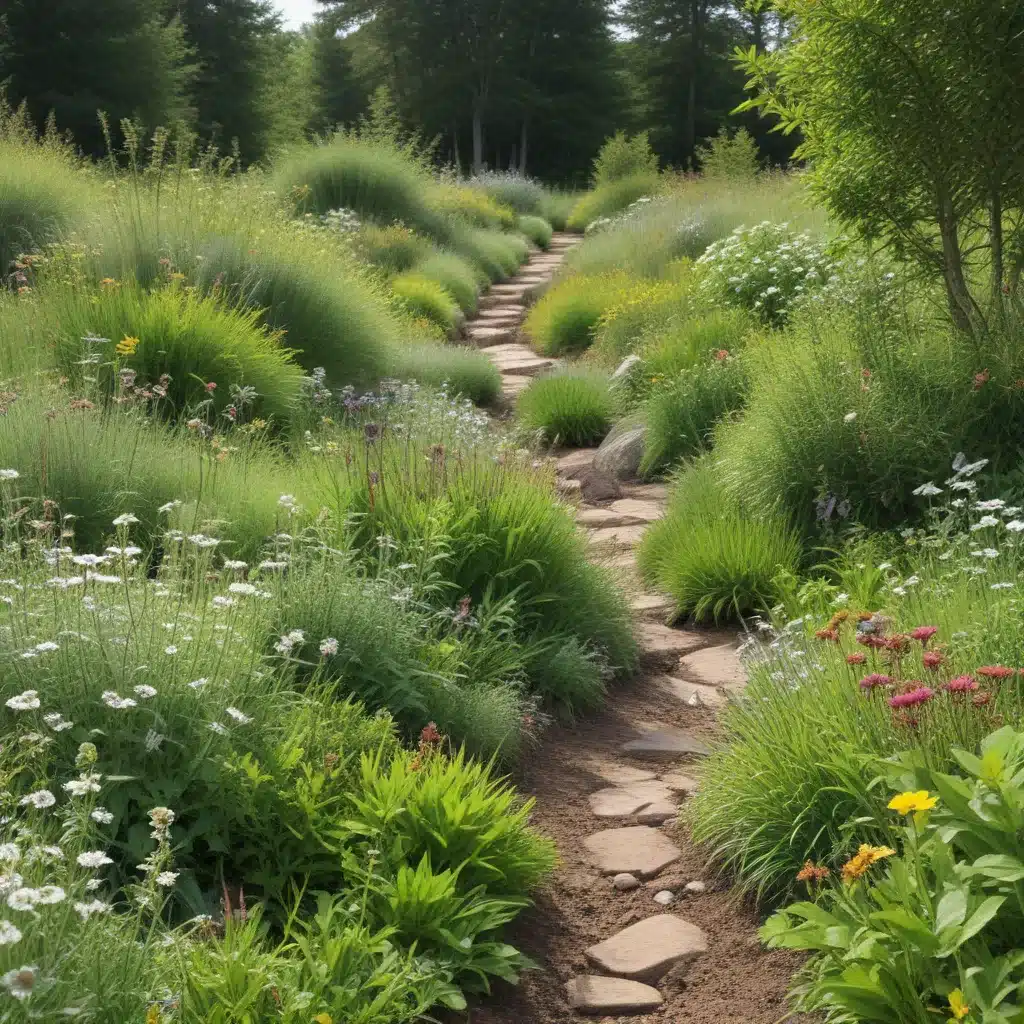
Biodiversity – the rich variety of life on Earth – is the foundation for healthy, resilient ecosystems. Yet, biodiversity is under threat from human activities like habitat loss, pollution, and climate change. As land stewards, landscape designers and gardeners have a unique opportunity to counteract these threats by creating environments that foster abundant, interconnected natural communities.
At the heart of ecological landscape design lies a simple but powerful principle: by prioritizing native plants and natural processes, we can cultivate vibrant, self-sustaining ecosystems right in our own yards and public spaces. This approach goes beyond aesthetic considerations to support the diverse web of life – from soil microbes to towering trees – that underpins ecosystem function.
Biodiversity and Ecosystem Conservation
Biodiversity Fundamentals
Biodiversity, the variety of living species and the ecosystems they inhabit, is essential for a healthy planet. It provides food, clean water, and other vital resources, while also regulating climate, mitigating natural disasters, and offering myriad cultural and recreational benefits. Unfortunately, biodiversity is declining at an alarming rate due to human activities. The primary threats include habitat destruction, pollution, overexploitation, invasive species, and climate change.
Landscape Design for Biodiversity
Landscape design rooted in ecological principles can play a pivotal role in conserving and restoring biodiversity. The key is to create landscapes that mimic natural systems, providing diverse habitats and resources for a wide range of native species. This involves thoughtful plant selection, arranging vegetation in multistrata communities, and incorporating features like deadwood, water sources, and sheltered microclimates.
Equally important is ensuring connectivity between natural areas, allowing species to move freely and access the resources they need. Landscape designers can achieve this by establishing wildlife corridors – linear landscape elements that link fragmented habitats. Strategically placed native plantings, living fences, and even green roofs can all contribute to an interconnected, biodiverse landscape.
Sustainable Landscape Planning
Holistic Ecosystem Considerations
Effective biodiversity-focused landscape design requires a comprehensive understanding of local ecosystems. This includes recognizing the abiotic (non-living) components like soil, water, and climate, as well as the biotic (living) elements – from microorganisms to apex predators. Analyzing how these interdependent parts function as a whole helps identify the optimal strategies for supporting a thriving, self-sustaining landscape.
A key consideration is the ecosystem services provided by diverse natural communities. These include water filtration, nutrient cycling, erosion control, and carbon sequestration – all critical for human and environmental well-being. By designing landscapes that enhance these natural processes, we can create vibrant, resilient habitats while also addressing broader environmental challenges.
Native Plants and Wildlife
The foundation of any biodiverse landscape is the strategic use of native plants – those that have co-evolved with local wildlife over centuries or millennia. Native species are uniquely adapted to regional climate, soil, and water conditions, requiring fewer inputs and providing superior habitat value compared to exotic ornamentals.
Carefully selecting and arranging native plants to mimic natural plant communities is crucial. This supports a diverse food web, from the soil microbiome to the birds, insects, and other animals that rely on native flora. By prioritizing native plants, landscape designers can foster native ecosystems that thrive with minimal human intervention.
Regenerative Gardening Practices
Soil Health and Nutrient Cycling
Healthy, living soil is the backbone of a biodiverse landscape. Soil microbiomes – the diverse communities of bacteria, fungi, and other microorganisms – play a vital role in nutrient cycling, water regulation, and carbon sequestration. Incorporating organic matter through compost and minimizing soil disturbance helps cultivate this vital underground ecosystem.
Thoughtful soil amendments that provide a balance of essential nutrients further support plant and microbial life. This regenerative approach contrasts with conventional landscaping practices that rely on synthetic fertilizers and pesticides, which can degrade soil health and disrupt natural cycles.
Water Management Strategies
In an era of climate change and increasing water scarcity, water-wise landscaping is essential for sustaining biodiversity. Techniques like capturing and infiltrating stormwater, using drought-tolerant native plants, and minimizing lawn area can reduce the need for irrigation while also mitigating runoff and erosion.
Carefully designed rain gardens, swales, and other stormwater management features not only conserve water but also filter pollutants and provide valuable habitat for aquatic species. By working with the natural hydrology of a site, landscape designers can create lush, resilient ecosystems that thrive with minimal human intervention.
Biodiversity Monitoring and Assessment
Indicator Species and Biodiversity Metrics
Evaluating the success of biodiversity-focused landscape design requires the use of indicator species – organisms that reflect the overall health and function of an ecosystem. By monitoring the presence, abundance, and diversity of these key species, designers can assess the efficacy of their strategies and make informed adjustments over time.
In addition to indicator species, landscape designers may employ various biodiversity metrics, such as species richness, Shannon diversity index, and ecosystem connectivity. These quantitative measurements provide a more comprehensive understanding of the ecological performance of a designed landscape.
Adaptive Management Approaches
Effective biodiversity conservation is an ongoing, iterative process. Adaptive management – the practice of continually monitoring, evaluating, and refining landscape design and management strategies – is essential for creating resilient, self-sustaining ecosystems.
By closely observing the responses of native plants and wildlife, landscape designers can identify and address emerging challenges, such as the spread of invasive species or the impacts of climate change. This flexible, data-driven approach allows for continuous improvement, ensuring that landscapes fulfill their potential as vibrant, biodiverse havens.
Through the implementation of ecological landscape design principles, gardeners and land managers can play a vital role in conserving and restoring biodiversity. By prioritizing native plants, enhancing soil health, and managing water resources sustainably, we can cultivate thriving, self-sustaining ecosystems that support a diverse array of life. To learn more about these strategies and how TriCounty Tree Care can assist with your landscape design and management needs, please visit www.tricountytreecare.com.


